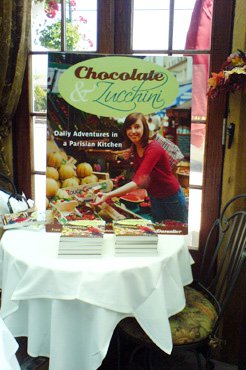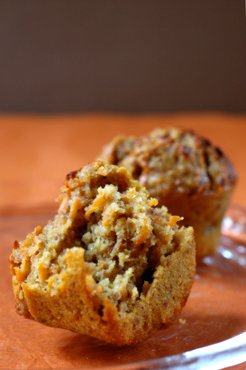The June/July issue of Régal* has just been released, with its fresh batch of inspiring ideas**, and it was my reading material of choice when Maxence and I went out for a drink on a terrace on Saturday afternoon, to bask in the fine weather.
And in the midst of the section on farmed vs. wild fish, a ray of sunlight fell on a recipe for barbecued herring served with chermoula.
If this is the first time you and chermoula meet, let me give you a brief introduction: in Moroccan cuisine, chermoula is the magic wand to deal with fish. It is classically a mix of fresh cilantro (a.k.a. coriander), garlic, and spices, bound together with lemon juice and olive oil***. The combination of spices varies depending on the cook’s preferences, and fresh parsley, fresh mint, or chopped onions may be added, but the basic idea remains the same: to form a thick paste that will be used as a marinade before grilling or baking the fish, or as a condiment at the table.
In Moroccan cuisine, chermoula is the magic wand to deal with fish.
I had purchased a whole dorade that morning, and chermoula seemed like the perfect foil for it; I bought a bunch of cilantro on the way home, and got to work. I used the printed recipe as a starting point, and modified a few things: I took the opportunity to use a Meyer lemon and the aleppo pepper I had brought back from the US, I used smoked paprika instead of regular, I added whole coriander seeds and a good pinch of saffron, and I decided to grind the ingredients together in my beloved mortar, instead of chopping them by hand or in a mini-chopper.
I will note here that it is not a difficult recipe (grind, pluck, grind again), but that one should not underestimate the time that is needed to pluck the leaves from the bunch of cilantro. However, this task is executed in a divine cloud of cilantro smell that makes it all okay — unless you’re one of those people who loathe cilantro, in which case you can just use flat-leaf parsley, but it’s not quite the same.
And the resulting emerauld green condiment accomplishes its mission remarkably well: its fresh, tangy, earthy notes, and its lingering heat make it flamboyantly flavorful, yet respectful of the fish’s sensibilities. Other uses include eating it by the spoonful, spreading it on thin slices of baguette, or mixing it with good-quality canned tuna for a mean tuna sandwich.
—
* Régal is a French bimonthly cooking magazine that was created three years ago. They don’t have a website (I know, I know, don’t get me started), but French residents can subscribe online here, and you can enquire about foreign subscriptions by writing to: abonnements [{ at }] uni-editions [{ dot }] com.
** And, I might add, an amuse-bouche recipe by yours truly on page 10.
*** [Wow, asterisks are flying low, today!] The name chermoula is sometimes given to spice rubs that combine a similar mix of spices with dried herbs and dried garlic.








